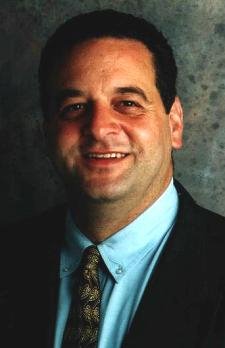Student laptops just the first step - Oct 17, 2006 - Marin Voice By Merril Boyce
Merrill Boyce: Student laptops just the first step
Marin IJ - Marin Voice
Staff Report
Article Launched:10/17/2006 01:20:00 AM PDT
Merrill Boyce
A YEAR AGO, the Reed Union School District introduced a laptop computer program at its middle school, giving each sixth-, seventh- and eighth-grader a laptop for use throughout the school year
.
We didn't do this willy-nilly; we had been building infrastructure and expertise and experience for 10 years.
We didn't do it without concern that the vaunted academic scores, the yardstick of public school achievement, might suffer - they didn't; they improved.
We didn't do it without purpose and planning; we intended to render teaching and learning what they were meant to be, individual experiences contingent on open access to tools and information and dependent on a student's ability and a teacher's engagement.
In a survey taken at the end of the first year - 93 percent of students and 100 percent of teachers participated - we learned a few things.
Our teachers, who have had their own laptop program for six years, are power users. Their highest use of the laptops is to communicate with students, their families and other teachers in the school and beyond.
Eighty percent of our teachers use them to create materials for class and do online research to augment lesson plans. This has significant advantage for keeping a curriculum current and fresh, especially in social studies and science where textbooks cannot keep up with events.
The teachers see their students using laptops to support individualized learning - the holy grail of teaching - to create digital presentations and to delve deeply into online source material.
Not surprisingly, 100 percent of teachers using laptops say "my teaching has benefited from laptop use."
The students find their greatest benefits are in writing, note-taking, online research and developing presentations. They find it easier to keep up with an electronic student planner and they appreciate having immediate access to class materials at home as well as at school. Nearly half use databases and spreadsheets.
More than three-quarters of our students responded positively to the statement "schoolwork has gotten more interesting since we got laptops." Eighty percent are convinced they are better organized, while a similar number say the laptop program has created higher student expectations. A full 89 percent say their "overall skill at using a computer" has improved. Only 26 percent use their laptop to read; books are not yet a thing of the past.
There are practical reasons for a school district to undertake a laptop program. Before the laptops, our classrooms groaned with a "high maintenance" assortment of computers and cables and paraphernalia, and entire schoolrooms were consumed as "computer lab" space. When we were working with classroom computers and computer labs, we couldn't schedule enough time for students to complete their essays and presentations during school hours.
A laptop program is an equalizer that lets each student work at a personally comfortable pace with no waiting in line and no time or place constraints. Each student has the same access to tools, online resources and information which leaves success fully in the hands of the student and teacher rather than to the whim of random access to pens, paper, material and information. We have more engaged and better-organized students, improved writers and more involved teachers. It all leads to better education.
Our challenge is not simply to maintain a laptop program. It is to provide common opportunity and uniform tools for every student. It is to enhance individualized, differentiated learning. It is to step up to the global challenge posed by an increasing number of well-educated students everywhere who, in our flattened world, are using technology to move to the front of the line.
Merrill Boyce is president of the Reed Union School District board.


<< Home